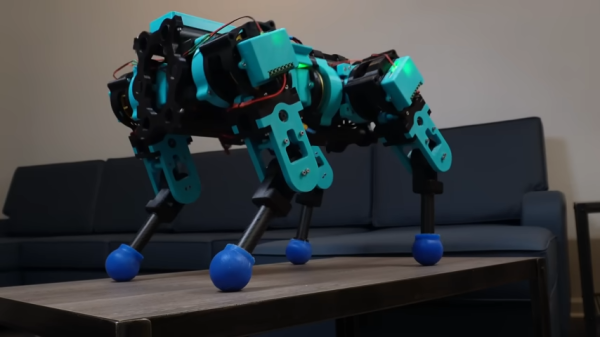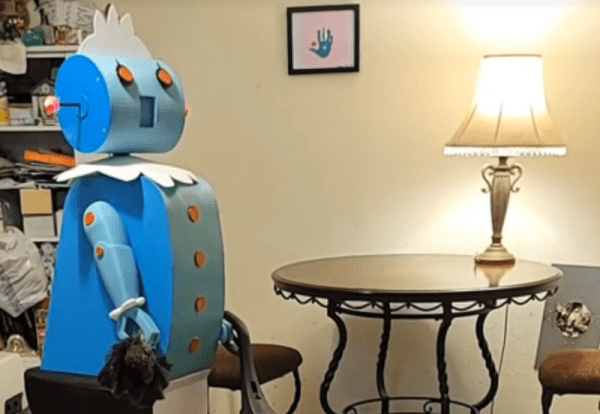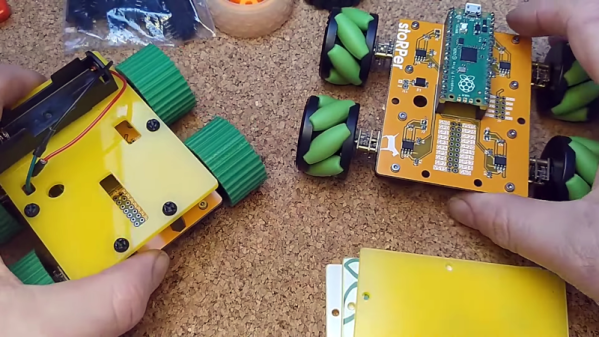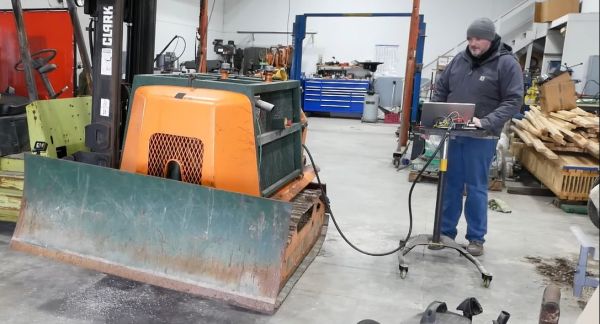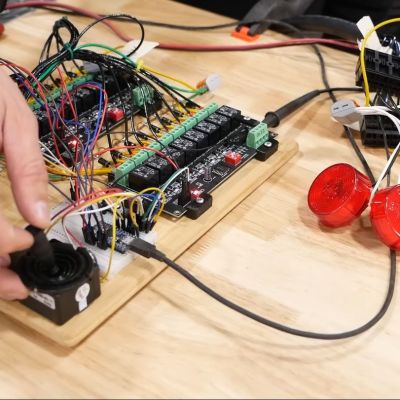We love [Aaed Musa]’s TOPS (Traverser of Planar Surfaces) which is a robot dog with custom-made actuators. The DIY is very strong with this project, and the 3D-printed parts alone took a whopping three weeks to print!
There’s additional detail on the electronics and design of TOPS in the build log of the project’s Hackaday.io page, so check it out because there are all sorts of nice design details, like the feet being cast with a silicone outer layer for better traction. We’ve previously covered [Aaed]’s DIY robotic actuator design which we’re delighted to see is put to excellent use in the finished robot.
Of course, a robot’s hardware and physical design is only part of the battle. In fact, [Aaed] says the software side of things was probably the biggest overall challenge. It takes a lot of work to make walking happen, and the process has in fact been a huge learning experience. [Aaed] already has plenty of ideas for a potential TOPS V2.
[Aaed]’s website has video tours of all stages of design and construction of TOPS, and there’s a GitHub repository for all the design details. To see it all in action, check out the short video rounding up the finished robot, embedded here just under the page break.

